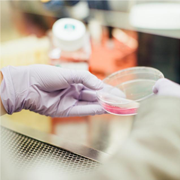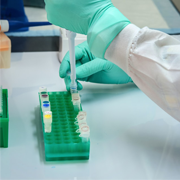Home > Products > Stem Cells > Induced Pluripotent Stem Cells (iPSCs) >
Human iPSC-Derived Motor Neurons | ||||
|---|---|---|---|---|
| Product Name | Human iPSC-Derived Motor Neurons | |||
| Price | Get Quote | |||
| Cat.No | ABC-SC112G | Species | Human | |
| Cell Type | Neuron | |||
| Growth Mode | Adherent | |||
| Size/Quantity | 1 vial | |||
| Shipping Info | Dry Ice | Storage | Liquid Nitrogen | |
| Description | Human iPSC-Derived Motor Neurons are derived from integration-free induced pluripotent stem cell (iPSC) lines under a fully defined proprietary neural induction condition. The source of the cells are primary fibroblasts, which were obtained from a healthy donor. This cell line provides a unique model system for better understanding of iPSC-derived motor neurons. Cells are provided at passage 1. | |||
| Disease | Normal | |||
| Quality Control | All cells test negative for HIV-1, HBV, HCV, mycoplasma, bacteria, yeast, and fungi. | |||
| Passage Number | 1 | |||
| Recommended Medium And Supplement | ABM-SM112G Human iPSC-Derived Motor Neurons Medium Kit | |||
| Citation Guide | When you publish your research, please cite our product as “AcceGen Biotech Cat.# XXX-0000”. In return, we’ll give you a $100 coupon. Simply click here and submit your paper’s PubMed ID (PMID). | |||
| Application | For research use only | |||
| Growth Conditions | 37 ℃, 5% CO2 | |||
| Questionsthree | What are the main applications of human motor neurons in scientific research? | |||
| Product Type | Human Induced Pluripotent Stem Cells | |||
| Product Image |  | |||
Frequently Asked Questions
What are human motor neurons, and what is their primary function?
Human motor neurons are nerve cells that originate in the central nervous system and extend their axons to muscles throughout the body. Their primary function is to transmit signals from the brain and spinal cord to the muscles, causing muscle contraction and movement. They are crucial for voluntary motor control and reflex actions.
How are human motor neurons typically obtained and cultured for research purposes?
Human motor neurons can be derived from stem cells, such as induced pluripotent stem cells (iPSCs) or embryonic stem cells, using differentiation protocols. For culturing, they are grown in specialized media that support their growth and functionality, containing essential nutrients, growth factors, and supplements that mimic their natural environment.
What are the main applications of human motor neurons in scientific research?
Human motor neurons are used to study neurodegenerative diseases like amyotrophic lateral sclerosis (ALS) and spinal muscular atrophy (SMA). They help in understanding motor neuron development, function, and response to injury. They are also essential in drug discovery and testing potential treatments for motor neuron-related conditions.
What are the key characteristics when culturing human motor neurons?
Key characteristics include their large cell bodies with long axons, expression of specific markers like ChAT (choline acetyltransferase) and HB9, and their ability to form functional synapses. They should exhibit healthy growth, proper electrophysiological properties, and responsiveness to changes in media composition or the introduction of pharmacological agents.
What are the main challenges in culturing and experimenting with human motor neurons?
Challenges include maintaining their viability and functionality in vitro, replicating the complex natural environment, and preventing contamination. Motor neurons are highly sensitive to stress and can be difficult to maintain over long periods. Variability in differentiation efficiency and quality from stem cells can also affect experimental consistency and reproducibility.
- ONLINE INQUIRY
- PRODUCT REVIEWS
Fill out a request in the form below and we’ll get back to you within 24 hours with a quote.





